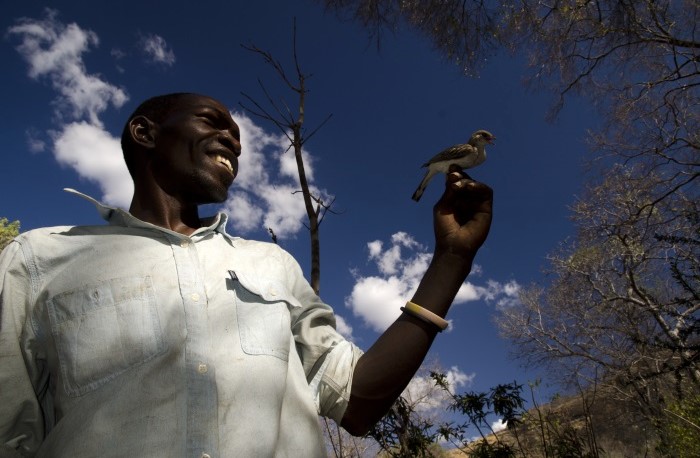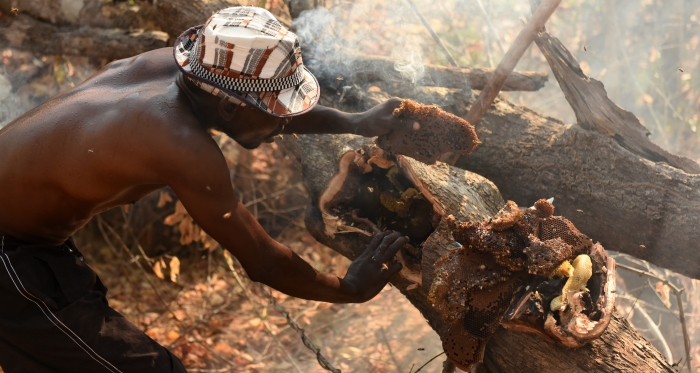Podcast: Play in new window

BOB HIRSHON (host):
A call to find honey. I’m Bob Hirshon and this is Science Update.
In a rare partnership, African birds called honeyguides lead humans to trees filled with honey.
CLAIRE SPOTTISWOODE (University of Cambridge and University of Cape Town):
Honeyguides very bizarrely love eating wax. And they’re very good at knowing where bees’ nests are located, whereas, humans are experts at getting into bees’ nests.
HIRSHON:
University of Cambridge and Cape Town evolutionary biologist Claire Spottiswoode says the Yao honeyhunters of Mozambique stay in contact with the birds during the search by making a special call:
(Yao honeyhunter call and honeyguide chatter)
SPOTTISWOODE:
Honeyguides seem to be attaching meaning and responding appropriately to the signal that advertises people’s willingness to cooperate with them.
HIRSHON:
In fact, in the journal Science, her team reports that playing these calls to the birds tripled the chance of finding bees’ nests compared with unrelated sounds. I’m Bob Hirshon, for AAAS, the science society.
Story by Susanne Bard

